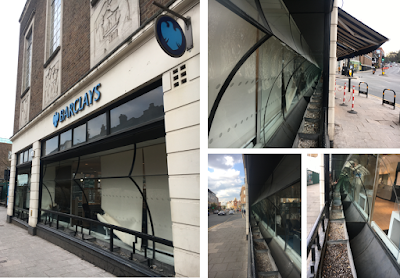Heading down Tottenham Court Road on a bus in early March this year, I noticed that Habitat had moved out. Oh dear. I got off the bus to take a few snaps. The exterior signage had been removed and the interior was being stripped. The lovely curved display windows that run around the shop on both sides were covered in dust.
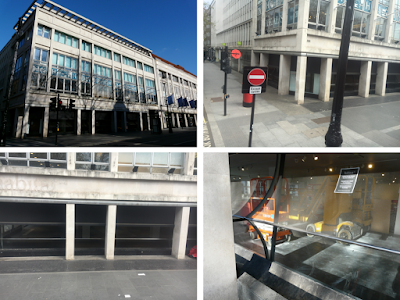 The windows around this part of the building are double co-joined curves – an expensive innovation, but this design allows the products to be seen clearly rather than be hindered by reflections from the street. The glass would have been installed in the late 1930s by Pollards, the go-to shop-fitting company of that era who had 'imported' this curved glass idea from the US.
The windows around this part of the building are double co-joined curves – an expensive innovation, but this design allows the products to be seen clearly rather than be hindered by reflections from the street. The glass would have been installed in the late 1930s by Pollards, the go-to shop-fitting company of that era who had 'imported' this curved glass idea from the US.
I went back in April and took some more photos. With all the furniture removed this gave clear views across the store space of the windows. Really good infitity shots are to be had from the exterior where mirrored end panels along the top sections repeat the curves.
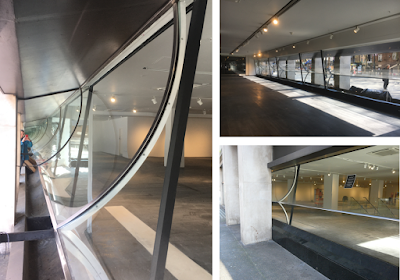
This got me thinking about how unusual horizontal curved glass panels are these days. I can only think of three other locations in London where they are also installed, and they are all slightly different:
Fox Umbrellas, London Wall, Moorgate – as I understand, this is the first site where this curved glass was installed. It's really hard to photograph, especially when the place, which is today a cafe bar, is closed during lockdown or open with people sat in front at tables. The double curves here are shallower than at the other three sites, not so deep. I haven't a clue what those blobby bits of art in the window are supposed to be.
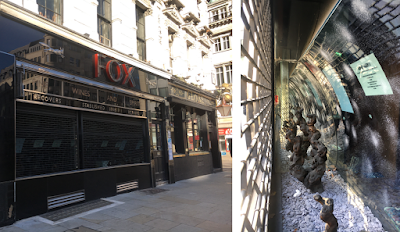
And then, of course, we have what is possibly the best-known example of these windows at Joseph Emberton's marvelous building for Alexander Simpson, a stone's throw from Piccadilly Circus. It opened in 1936 selling Simpron's range of men's clothing and is today home to Waterstone's bookshop. Here we a have a row on single deep curves, again with the mirrored ends. During the Christmas 2018 period part of the windows were damaged and suffered huge cracks, as shown below protected by thick adhesive plasitc sheets. This being a Grade I listed building, the glass was replaced. Phew.
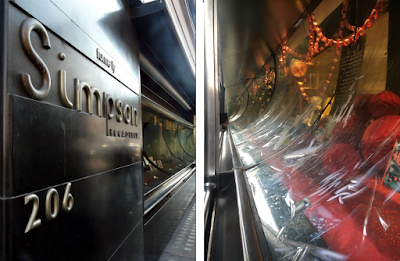
The beautifully-designed building has, in effect-two front doors – the southern entrance in Jermyn Street is just as impressive, implementing the same curved glass:
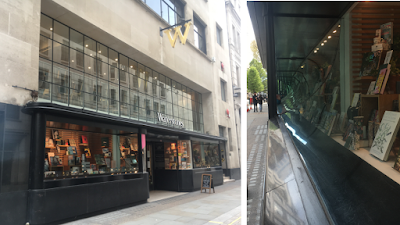
And the fourth/last London example, unless someone can tell me where to find others, is on the old gas showroom on Crouch End Broadway, today home to Barclays Bank, where there are double shallow curves along both sides of the building.
